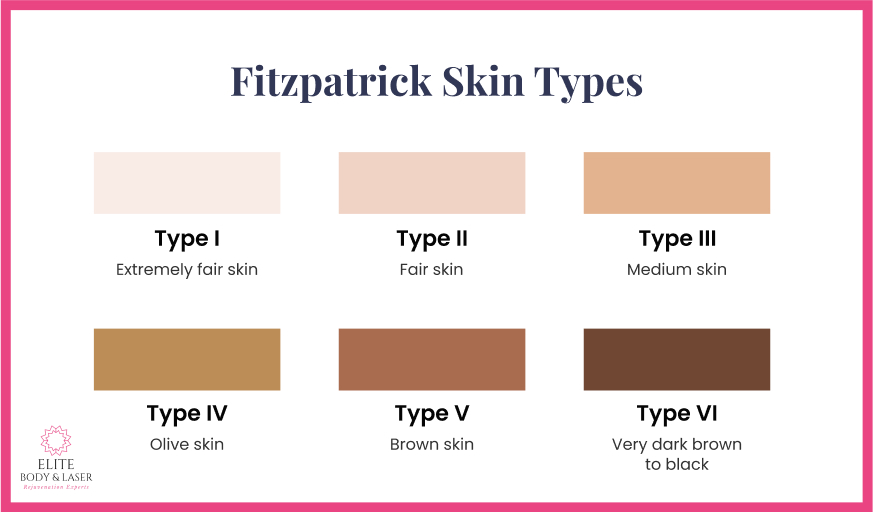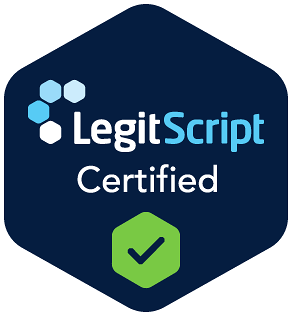Tattoo removal for dark skin is filled with advanced techniques and evolving technologies, challenging the myth that it’s risky.
Indeed, with the right approach, removing tattoos from darker skin is safe and highly effective.
Learn more about the lesser-known aspects and expert insights that make tattoo removal for dark skin a fascinating and achievable journey.

Understanding Skin Types and Tattoo Removal
Darker skin types have higher concentrations of melanin, the pigment that gives skin its color.
This increased melanin can pose unique challenges during tattoo removal, affecting how the skin absorbs and reacts to the laser treatment.
It’s a delicate balance – targeting the tattoo ink without disrupting the skin’s natural pigmentation.
This is where the expertise of a skilled practitioner becomes invaluable.
The Fitzpatrick Scale: Assessing Skin Types
The Fitzpatrick Scale is a dermatological cornerstone, pivotal in tattoo removal, especially for those with darker skin.
Developed in 1975 by Thomas B. Fitzpatrick, this scale classifies skin types based on their reaction to ultraviolet light, but its application extends far beyond that.
In the context of tattoo removal, it’s a vital tool for predicting how different skin types will respond to laser treatments.
- Type I: Extremely fair skin, always burns, never tans.
- Type II: Fair skin, burns easily, tans minimally.
- Type III: Medium skin, burns moderately, tans gradually.
- Type IV: Olive skin, burns minimally, tans easily.
- Type V: Brown skin, rarely burns, tans darkly easily.
- Type VI: Very dark brown to black skin, never burns, tans very darkly.
Each type requires a unique approach to tattoo removal. For instance, Types I to III might have a straightforward removal process with minimal risk of pigment changes. In contrast, Types IV to VI necessitate a more nuanced approach to avoid affecting the skin’s natural pigmentation.
Risks and Considerations for Dark Skin
When it comes to darker skin types (IV-VI), the tattoo removal process is laced with specific challenges:
- Hyperpigmentation: This is where treated areas become darker than the surrounding skin. It’s usually temporary but requires careful management.
- Hypopigmentation: The opposite of hyperpigmentation, hypopigmentation involves lightening of the skin. It can be more concerning as it’s often permanent.
- Scarring: While rare, improper laser use can lead to scarring, making choosing a skilled practitioner crucial.

Popular Tattoo Removal Methods for Dark Skin
Laser Tattoo Removal
Laser tattoo removal has revolutionized how we approach the erasure of unwanted ink, and its advancements have made it a viable option for those with darker skin tones.
Here’s a brief overview:
- How It Works: This method uses concentrated laser beams to break down the tattoo ink into smaller particles, which the body naturally eliminates.
- Types of Lasers: Q-switched lasers, such as Nd:YAG, are often preferred for darker skin due to their lower risk of altering skin pigmentation.
- Suitability for Dark Skin: While effective, laser removal requires extra caution for darker skin. The laser settings must be carefully adjusted to minimize the risk of hyperpigmentation or hypopigmentation.
- Precautions: It’s crucial to have a patch test and consult with a technician experienced in treating darker skin tones.
Non-Laser Alternatives
While laser treatment is popular, it’s not the only route. Non-laser methods like Tatt2Away® offer alternative solutions.
- Tatt2Away® Explained: This non-laser, all-natural method removes the ink via an escharotic process, forming a scab that lifts the ink out as it heals.
- Suitability for Dark Skin: Tatt2Away® is often touted as safer for darker skin types, as it doesn’t rely on light absorption, thereby reducing the risk of pigmentary changes.
Comparing Efficacy and Safety:
- Efficacy: While laser treatments can be more precise for detailed tattoos, Tatt2Away® can effectively remove larger areas of ink.
- Safety: Both methods have their risks, but Tatt2Away® may present fewer risks of pigment changes for dark skin.
- Number of Sessions: Tatt2Away® might require fewer sessions than laser removal, but this can vary based on the tattoo’s size and complexity.

Preparing for Tattoo Removal
Embarking on your tattoo removal journey requires more than just walking into a clinic and starting treatment. Preparation is vital, and it begins with two critical steps: an initial consultation and skin testing.
Initial Consultation and Skin Testing
- The Importance of a Thorough Initial Consultation: This is your opportunity to discuss your medical history, skin type, and any previous experiences with skin treatments. It’s also a chance for the practitioner to examine your tattoo and assess the best course of action.
- Role of Test Spots in Predicting Skin Reactions: Particularly for those with darker skin tones, test spots are a crucial step. They involve treating a small area of the tattoo to observe how your skin reacts to the laser. This helps fine-tune the laser settings for your specific skin type, minimizing risks and optimizing results.
Setting Realistic Expectations
- Discussion on the Number of Sessions and Timeline: Tattoo removal is not a one-and-done deal. It’s a process that can take several sessions, depending on the size, color, and age of the tattoo and your skin type.
- Managing Expectations Regarding Complete Removal and Potential Side Effects: It’s important to understand that while significant fading is achievable, complete removal without any trace can be challenging. Also, being aware of potential side effects like temporary redness, swelling, or changes in skin pigmentation is essential.
The Tattoo Removal Process
Embarking on the path to remove a tattoo is a journey that involves careful steps and considerations. Understanding what happens during the procedure and the importance of aftercare can significantly impact the outcome.
By adhering to these guidelines and understanding each phase of the tattoo removal process, you can ensure a safer, more effective journey toward achieving your desired results.
During the Procedure
Step-by-Step Description of the Tattoo Removal Process:
- Skin Preparation: The area around the tattoo is cleaned and possibly numbed with a topical anesthetic.
- Laser Settings Adjustment: The laser settings are customized for optimal results based on your skin type and the tattoo’s characteristics.
- Laser Application: The laser is applied to the tattoo, emitting pulses of light that break down the ink particles.
- Immediate After Effects: Post-treatment, you may notice redness, swelling, and a frosting effect (a temporary whitening of the treated area).
- Pain Management and Comfort: While discomfort levels vary, most people compare the sensation to a rubber band snapping against the skin. Cooling methods and numbing creams can be used to enhance comfort.
Aftercare and Healing
Detailed Aftercare Instructions:
- Immediate Care: Apply ice packs to reduce swelling and avoid rubbing or picking at the treated area.
- Cleaning and Moisturizing: Gently clean the area with soap and water, then apply a prescribed ointment to moisturize it.
- Sun Protection: Protect the treated area from direct sunlight to prevent changes in pigmentation.
- Hydration and Healthy Diet: Staying hydrated and maintaining a healthy diet can aid in the healing process.
Importance of Following Professional Advice:
- Relying on professional guidance rather than DIY methods is crucial for safe healing and optimal results.
- Regular follow-up appointments allow for monitoring of the healing process and any necessary adjustments in treatment.
Your Path to Clearer Skin Awaits
While intricate, the journey of tattoo removal for dark skin is far from impossible. As you contemplate this significant step, consider partnering with experts who prioritize your skin’s health and personal goals. If you’re ready to embark on this transformative journey, contact a professional today.

